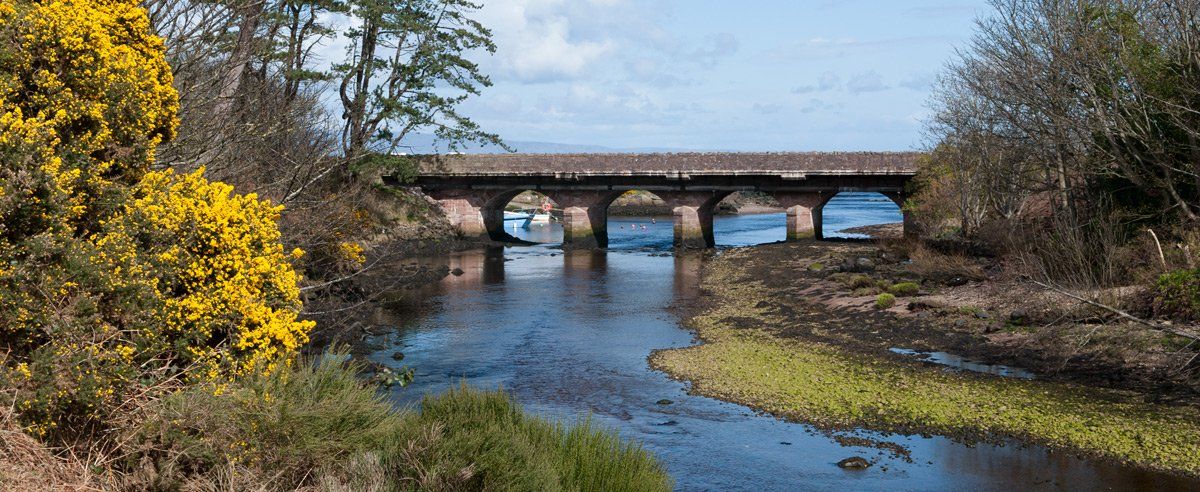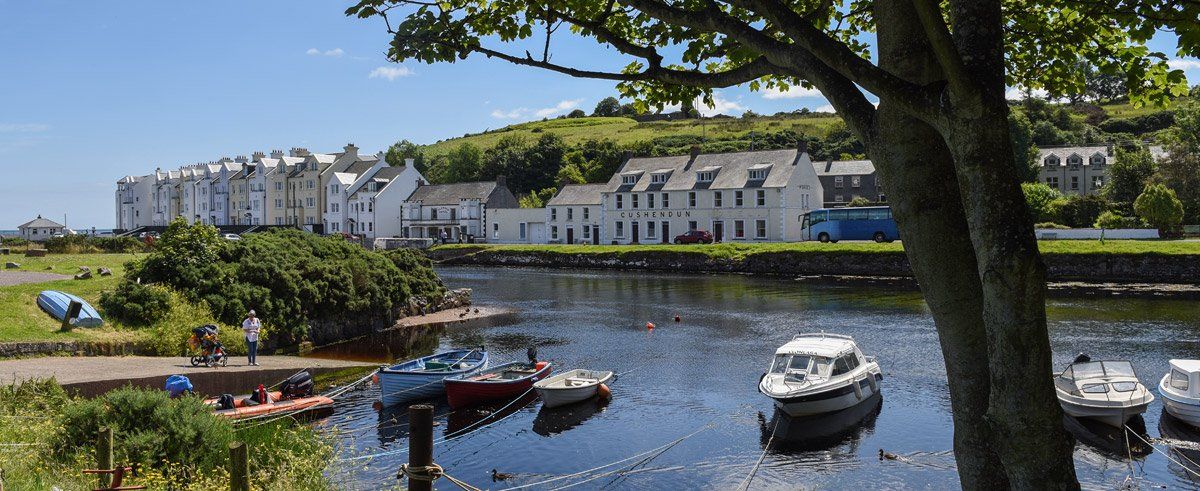The village is situated on a raised beach at the outflow of Glendun and Glencorp. After the last ice age these glens would have been shallow water inlets, as the ice receded the land mass rose and created the raised beach. A regular ferry service operated between here and Dunaverty on the Mull of Kintyre from the mid-1600s until it ceased during the Famine (1840s). The harbour had its own customs house and passport office until 1800 when the Act of Union between Britain and Ireland was passed. In 1820 a survey by the Irish Fisheries Board carried out by Alexander Nimmo listed 15 vessels associated with Cushendun.
A wooden bridge was replaced by the present bridge in 1860 at the same time as Charles Lanyon designed Glendun Viaduct. A rough track would have connected Cushendun through Glendun to Newtowncrommelin and Ballymena for people and livestock to and from the ferry. The same track that Sorley Boy MacDonnell followed up the glen at night to lay a trap and set up positions for the 'Battle Aura' in 1583 when he defeated the combined forces of the MacQuillans, O'Neills and supporting English cavalry.
In 1830, Nicolas De la Cherois - Crommelin began a plan to develop Cushendun harbour to cater for the surrounding district and the industrial centre of Ballymena. The architect Sir John Rennie was commissioned for the design but the project failed due to lack of financial support. The beautiful beach sweeps round from the harbour to the boat slip near Cara Castle. This would have been where the clans landed and sailed from. The date when the castle was built is unclear, it may have been a Norman outpost rebuilt in the 15th century. Evidence exists of an earlier fort and also of Mesolithic flint workings.
A famous character of Cushendun was Johann the goat, a sculpture by the artist Deborah Brown is to his memory. He was a feature at the harbour area for many years, grazing the river bank and welcoming visitors, unfortunately, the foot & mouth outbreak in 2001 resulted in him being the last animal to die during the cull. Today, another goat Mirriam, carries on his legacy in the shadow of his sculpture, and I might add in much the same way as he did. The built heritage of the village including Glenmona House and the surrounding landscape is managed by the National Trust.




